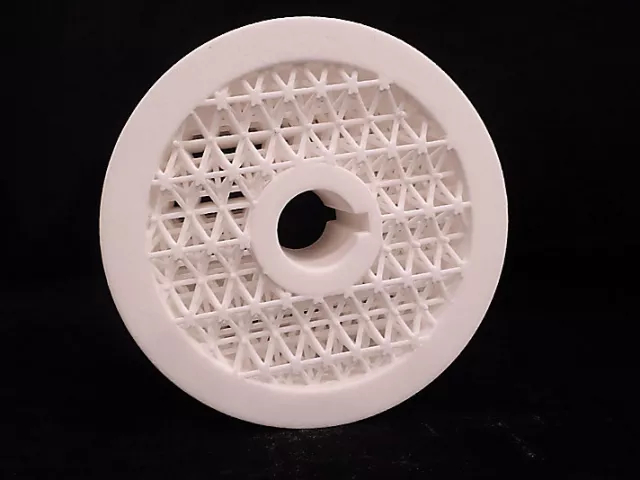
As 3D printing is increasingly being adopted as a tool used beyond rapid prototyping, businesses will be eager to learn how to incorporate it effectively.
A company may not want to or be able to immediately jump into full-fledged additive manufacturing (AM) of end parts, however.
According to Additive Manufacturing product manager at Caterpillar Inc., Stacey DelVecchio, the best strategy might be to “think big, start small, and act fast.” This was DelVecchio’s advice at the 2017 Additive Manufacturing Users Group (AMUG) Conference and, as she described the history of AM at the large equipment manufacturer, it seemed as though Caterpillar’s model might be worth considering for other big businesses, as well.
The Birth of AM at Caterpillar
The history of 3D printing at Caterpillar reflects, in some ways, DelVecchio’s own history with the company. “In 1991 we got our first stereolithography machine,” DelVecchio explained. “It was in our rapid prototyping lab. We created this rapid prototyping lab that has been around for years. Most of our engineers saw our rapid prototyping lab and used it. It wasn’t a technology that a lot of people could get any other way. So, we did fit up, we did visualizations, we did some beautiful models. It was all around me, and it still is for over 25 years.”
Once desktop 3D printers became a reality, engineers at Caterpillar began seeing them sitting on their desks. As covered in previous ENGINEERING.com articles, desktop machines can prove valuable for early design iterations and visualization, before more advanced AM processes might be necessary.
Over time, however, Caterpillar sought to expand the use of AM throughout the business more broadly, particularly as the technology matured. “There’s nothing wrong with rapid prototyping and visualization, but what we decided was actually critical was to use additive to move to the next level from an innovation perspective,” DelVecchio told the audience at AMUG.
The question for her, however, was “How in the world do you do that when you have got all these employees—about 100,000 employees all over the place?”
Nomadic Printers, AM Summits and Design Competitions
With Caterpillar having such a large global footprint, DelVecchio explained that the answer was to start small—a strategy that the company has learned to implement as it began manufacturing giant, expensive machines that are meant to hold up reliably after hours of intense work in the field. This means launching test pilot programs and working with early adopters on products before their widespread implementation.
This resulted in the “Nomadic Printer Program,” as DelVecchio referred to it. A forward-thinking executive at Caterpillar instructed DelVecchio’s team to purchase AM systems without a concern for return on investment, leading to the purchase of six industrial machines, including uPrints, Fortus 250s, an Objet printer and an HD Max.
The printers were delivered to Caterpillar manufacturing facilities throughout the United States, where local engineers were given permission to experiment with the technology in any way they wanted. Although DelVecchio said that there were some successes from the program, she also had engineers calling up and asking her, “Hey, Stacey, what do you want us to print with your printer?”
In order to more formally educate Caterpillar employees and engineers about the technology, the company hosted an AM summit, made up of sessions and presentations that were designed get teams thinking more seriously about the technology. DelVecchio said that this will evolve into a more directed approach to AM this year with the introduction of “Design for Additive” workshops, in which Caterpillar team members who already understand the need for the technology will begin work on actually designing for AM in order to solve specific problems.
To further engage its employees in this mindset, Caterpillar hosted a design competition, asking engineers to go beyond 3D-printed jigs and fixtures and, instead, focus on end parts that would be improved with AM. The winning design was a ball check valve that combined multiple components of an assembly into a single, metal 3D-printed part. This initiative will be expanded this year into four or five different competitions.
Read more at ENGINEERING.com

